The Translation and Communication in Healthcare course will educate healthcare providers (HCP) on the importance of health literacy and effective communication with patients.
Personal health literacy is the degree to which an individual has the ability to find and understand health-related information. Organizational health literacy is the degree to which organizations equitably enable individuals to find and understand health-related information.
Patients suffering from language barriers have lower quality of care and poor clinical outcomes. Access to language assistance for patients is important for ensuring that all populations have high-quality care.
What you’ll learn
- Overview of health literacy
- Why health literacy is important
- Overview of a language access plan
- How to foster a supportive culture
- How to adapt current systems
Details
Course length: 45 minutes; CME 0.75
Languages: American English
Key features: Audio narration, learning activity, and post-assessment
Get Certified
American Medical Compliance (AMC) is a leader in the industry for compliance, Billing, and HR solutions. To become certified, please visit us at American Medical Compliance (AMC).
Explore our other courses by visiting the AMC Course Library.
ACCME Accreditation
American Medical Compliance is accredited by the Accreditation Council for Continuing Medical Education (ACCME) to provide continuing medical education to physicians. Our Continuing Medical Education (CME) program is committed to enhancing the knowledge, skills, and professional performance of healthcare providers to improve patient care outcomes. Through high-quality educational activities, we aim to address the identified educational gaps and to support the continuous professional development of our medical community. American Medical Compliance designates this activity for a maximum of 0.75 AMA PRA Category 1 Credits. Physicians should only claim this credit for their complete participation in this activity.
Why Is Translation Important?
People with limited English proficiency (LEP) represent a large and vulnerable population. The United States is becoming increasingly diverse, meaning that language barrier issues will only become more magnified. For example, approximately 20% of the U.S. population speaks a language other than English at home.
Approximately 8.6% of the U.S. population has LEP. These people are at risk of adverse medical events due to language barriers. Therefore, access to sufficient translation can impact patient safety and the quality of healthcare.
Health Literacy Research Findings
Research shows that it is counterproductive to blame individuals for not understanding health information. Everyone, no matter how educated, is at risk of misunderstanding health information. Therefore, physicians must try to communicate accurate information understandably. Patients may believe they understand directions at the moment, but may later realize that they are confused about a part of the process. Therefore, healthcare organizations must have proper procedures in place to ensure that patients understand their healthcare treatment. People find it very difficult to differentiate evidence-based information from misleading advertisements online. Also, the concept of “risk” is difficult for both providers and patients to communicate about. All of these findings reveal key policy features that highlight the importance of translation in healthcare.
Language Access Plan
A language access plan is a document that gives guidance on how to provide medical services for those who do not speak English. This course describes several key features of the language access plan.
For example, the plan must include a needs assessment and a description of the translation services offered. Additionally, the plan must contain any notices or training recommendations. Organizations must evaluate the language access plan periodically. This training also provides in-depth information on each of the sections described.
The needs assessment is the first section of a language access plan. This section outlines how an organization will assess the language assistance needs of its patients.
Organizations must consider the number of individuals with limited English proficiency. This helps organizations understand the needs of current and prospective patients. Also, facilities must establish points of contact. These are instances in which individuals with limited English proficiency will receive their appropriate language services. Examples of points of contact include the call center and the reception desk.
Translation Services
Organizations must provide interpretation services and translated materials. Verbal interpreters are useful in healthcare settings.
Interpreters may be already existing staff or contracted workers. Additionally, written communications should have translated versions available. Documents that contain vital information regarding patient results or medical services should have multiple versions in different languages.
Notices
Persons with limited English proficiency must have access to notices regarding language services. For example, notices posted in the reception area or in other places where patients and staff interact are noticeable. Organizations can also post notices online via their website. This course describes other aspects of the language access plan that are vital to healthcare workers. For example, this training provides details on Section 5: Evaluation.
Language access plans should continuously be monitored and improved. Organizations can periodically evaluate the plan to ensure that it is working well. There are several evaluation policies and procedures that facilities must follow. Please refer to this course for a description of organizational policies.
Fostering a Supportive Culture
Organizations must support identifying and reporting near misses and medical errors to enhance patient safety. Leadership must communicate the importance of a just culture within healthcare settings. This training gives more information on the process of implementing a just culture framework. Additionally, a blame-free environment must be established to learn from mistakes and improve the quality of care.
The safety of diverse patient populations is extremely important. The current safety climate must be assessed for proper language and cultural acceptance. Remember, the safety of all patients is the most important healthcare standard.
Adapting Current Translation Systems
Current systems must be modernized to better identify and analyze medical errors that occur due to language barriers or racial differences. However, some healthcare settings make it extremely difficult to analyze racial or ethnic data. Without this information, hospitals are limited in determining the health risks of LEP patients.
Current systems can be improved to identify root causes and risk factors for LEP patient health. Patient data should be collected early in the care process, ideally at registration.
There are several ways in which data collection processes could be facilitated. For example, physicians can gather information regarding language preference when patients register for appointments by phone.
Reporting Medical Errors
Patient safety is determined by the effectiveness of medical error reporting systems. Systems that include user-friendly tools to facilitate reporting are more likely to reveal accurate data regarding medical errors. Institutions should implement strategies to empower staff and translators to report medical errors. By developing a culture of accountability, staff and translators will feel more empowered to report adverse medical events. Also, all staff should be trained on how to handle adverse patient safety events.
Monitoring Patient Safety
To improve the quality of healthcare services, organizations must routinely report on their performance of care. This process allows facilities to identify problem areas and develop strategies for improvement. Routine and systematic evaluation is a necessary component of a patient safety system.



